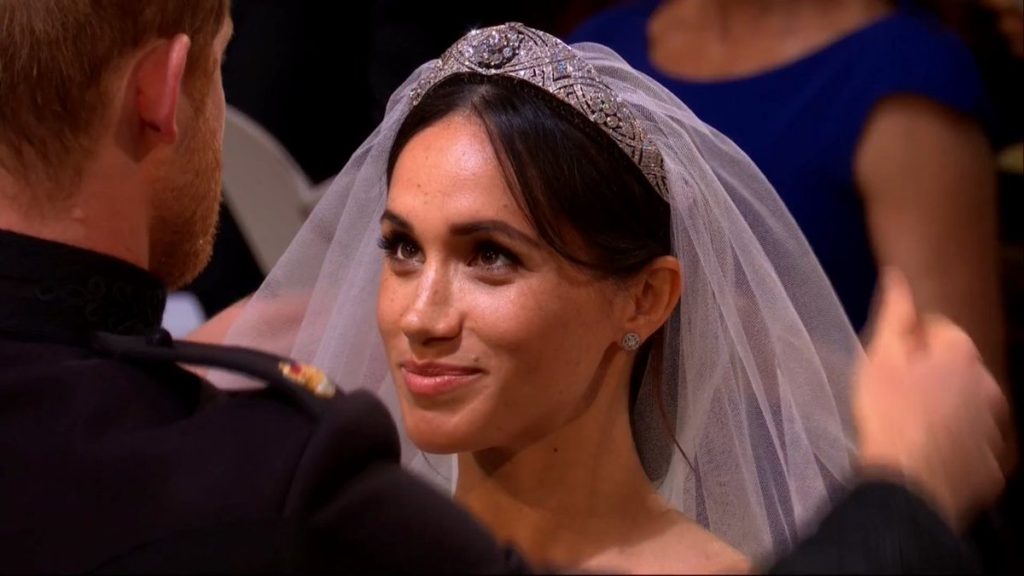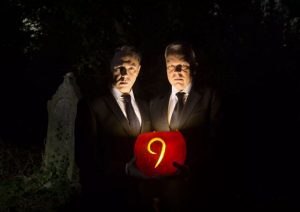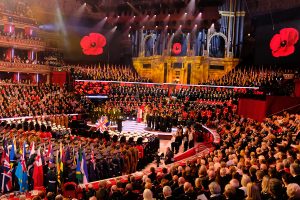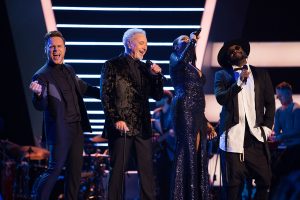
After more than 35 years of operation, TBI is closing its doors and our website will no longer be updated daily. Thank you for all of your support.
How BAFTA-nominated directors shot the Royal Wedding, ‘Inside No. 9 Live’
A careful balance of tech innovation and storytelling flexibility are the hallmarks of this year’s multi-camera direction nominees for the British Academy Television Craft Awards.
The nominees – who are predominantly women – include Barbara Wiltshire, who is nominated for Inside No. 9 Live: Dead Line (BBC Studios/BBC Two); Bridget Caldwell for The Royal British Legion Festival of Remembrance (BBC Studios/BBC One); Liz Clare for The Voice UK (ITV Studios/Talpa/ITV); and Julia Knowles, Helen Scott and Simon Staffurth for The Royal Wedding: Prince Harry and Meghan Markle (BBC Studios/BBC One).
Between them, around 85 cameras were used across the four productions, all of which happened to be live events that presented their own sets of challenges – from adding a clutch of innovative camera angles to the traditionally single-camera Inside No. 9 to getting “emotional” interactions between the bride and groom at the year’s most high-profile wedding.
Knowles – whose credits include The Nobel Peace Prize Concert and the MTV European Music Awards – used 35 cameras with 4K capabilities to shoot the Royal Wedding, including 28 cameras inside Windsor’s St. George’s Chapel. Ultimately, her broadcast was the sole feed of the May 2018 wedding ceremony, watched by millions around the world.
The production was a rigorous exercise in planning, Knowles tells TBI, particularly as the names and seating arrangements for high-profile guests such as Oprah Winfrey and Serena Williams were a closely guarded secret until the morning of the wedding.
“It was all secret, so that’s where the planning came in,” she says. “We needed to have a camera on the organ loft that could shoot down into the nave, enabling us to see all the seats. We also knew that when Meghan arrived, everyone would stand, so we had cameras on the floor as well, tucked to the side.
“You have to think through the emotion and protocol of what’s happening and know what cameras can see where. It’s living through what’s going to happen before it happens.”
Knowles says innovation in remote camera technology has elevated the storytelling of such event coverage.
“In the past, we were limited because cameras were large and got in the way, and we needed a lot of extra lighting, but with HDR and 4K cameras, you don’t need that much light.
“For events in historical places, where you can’t just stick scaffolding all over the place, being able to work with remote cameras with proper lenses meant there were specific stands and mounts built so we could get into position, and that meant we were completely in the choir and in front of Harry and Meghan.”
Elsewhere, Barbara Wiltshire, who directed Inside No. 9 Live: Dead Line, had between 12 and 15 cameras on the go to shoot the critically acclaimed episode of the dark comedy anthology, which had been running for four series before venturing into live terrain in October 2018.
The episode, which aired over the Halloween period, follows a man who finds a mobile phone in a graveyard and takes it home, only to find that strange events begin to take place around him. The programme played with viewers, creating the illusion of falling off air, losing sound and having technical difficulties.
“That brought with it a lot of challenges in the way we wanted to film, because not only did it need to have the very traditional multi-camera studio element of the scripted drama that everyone was supposed to believe in, but it also needed the backstage element with remote cameras, as well as [Reece Shearsmith’s] helmet camera and special effects all going off live,” explains Wiltshire.
The helmet camera was the most challenging but necessary to give the scene the energy required. “Because it was a helmet, we thought of GoPros that cyclists sometimes wear. However, while it was great to use, it brought a lot of difficulties in terms of a live show, because it needed to technically work and not fail.”
Wiltshire, who has directed episodes of 8 Out Of 10 Cats and Frankie Boyle’s New World Order, says the “tech side of TV is moving quickly” and highlights that Shearsmith’s head camera – “the size of it and the tech capabilities of outfitting it with a radio frequency” – may not have been possible even five years ago.
Similarly, Bridget Caldwell also needed to think innovatively for BBC One’s 2.5-hour-long presentation of The Royal British Legion Festival Of Remembrance, which aired in November and featured performances from Tom Jones and Sheridan Smith.
The director, who had 16 cameras at her disposal, has filmed the ceremony for four years, but last year’s event, which marked 100 years since the end of the First World War, was “particularly moving” for audiences.
“Every year, it gets pushed a little bit more technically,” she says, but the use of a large cube-like structure at Royal Albert Hall, called a ‘gauze’ by some tech supervisors, on which images and video were projected, presented a new challenge for the director.
“It was a 10-minute sequence where we commemorated the end of the war,” she says. “It all had to be in sync, and when we went on air, I wasn’t 100% confident it would work – it had that edge. To do a live event on that scale and with that level of tech – it was brave.”
For Liz Clare, who has directed The Voice across two series at the BBC and three at ITV, large studio settings are very much the norm. The director needs to work with “remarkably different” camera and staging set-ups that vary from the blind auditions to the battle rounds, knock-out episodes and live performances.
“Each section is different and the format changes each time,” she says, noting that she uses 19 cameras on blind auditions and around 15 for the live shows.
While the show is constantly updating its LED screens around the sets to update the look of the show – particularly the live programmes – Clare highlights that her team is looking to introduce a brand new camera that is catered specifically for The Voice set.
“We are in talks now with a tracking system operator and supplier to try and engineer something. We have to [get it] made bespoke for our set,” she explains.
“The big thing about The Voice is those big four chairs and on the live shows the hardest thing for me is getting between the chairs, the set and the singer to give people at home a close-up view of that person without the chairs between them and the singer.”
Clare’s team is trying to engineer a camera that can work between the chairs and set but disappear at points where it shouldn’t be seen – “Like a meerkat, so it pops up and hides and then tracks to the docking bay and comes back when I need it.
“If we do it, it would be very unique and special for that show,” says Clare.
The BAFTA Craft Awards will take place on Sunday, 28 April. The awards will be streaming live on BAFTA’s YouTube channel at 6.15pm.






